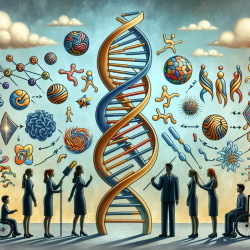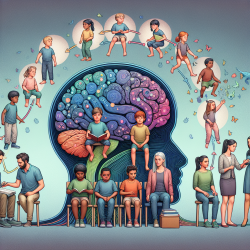Introduction
The intersection of technology and biology is providing new avenues for advancing therapeutic practices. One fascinating area of research is the development of human–animal chimeras (HACs), which could revolutionize medical treatments, including online therapy services for children. The recent study, A Technological and Regulatory Review on Human–Animal Chimera Research: The Current Landscape of Biology, Law, and Public Opinion, offers valuable insights that practitioners can leverage to enhance their skills and outcomes.
Understanding Human–Animal Chimeras
Human–animal chimeras are organisms composed of cells from both humans and animals. This groundbreaking research has shown that these chimeras can be used to grow human organs in animals, providing a potential solution to the organ shortage crisis. The technology involves gene editing techniques like CRISPR and TALENs to create these chimeras, which are then used for various medical applications.
Implications for Online Therapy
While the direct application of HAC research to online therapy might not be immediately apparent, the underlying principles can be highly beneficial. Here are a few ways practitioners can integrate these insights:
- Innovative Use of Technology: Just as HAC research leverages cutting-edge technology, online therapy platforms like TinyEYE can incorporate advanced tools to enhance therapeutic outcomes. This could include AI-driven assessments and personalized therapy plans.
- Data-Driven Decisions: HAC research is highly data-centric, emphasizing the importance of empirical evidence. Online therapists should adopt a similar approach, using data analytics to track progress and adapt therapy strategies accordingly.
- Ethical Considerations: The ethical debates surrounding HAC research highlight the need for ethical guidelines in online therapy, especially when dealing with vulnerable populations like children. Ensuring privacy and consent should be paramount.
Encouraging Further Research
The study also underscores the importance of ongoing research and public engagement. Practitioners are encouraged to stay updated with the latest advancements and consider participating in research initiatives. Collaboration with academic institutions can provide access to new tools and methodologies that can be integrated into online therapy services.
Conclusion
By understanding and implementing the insights from HAC research, online therapy practitioners can enhance their services, leading to better outcomes for children. The integration of innovative technology, data-driven decisions, and ethical considerations can create a more effective and responsible therapeutic environment.
To read the original research paper, please follow this link: A Technological and Regulatory Review on Human–Animal Chimera Research: The Current Landscape of Biology, Law, and Public Opinion.










